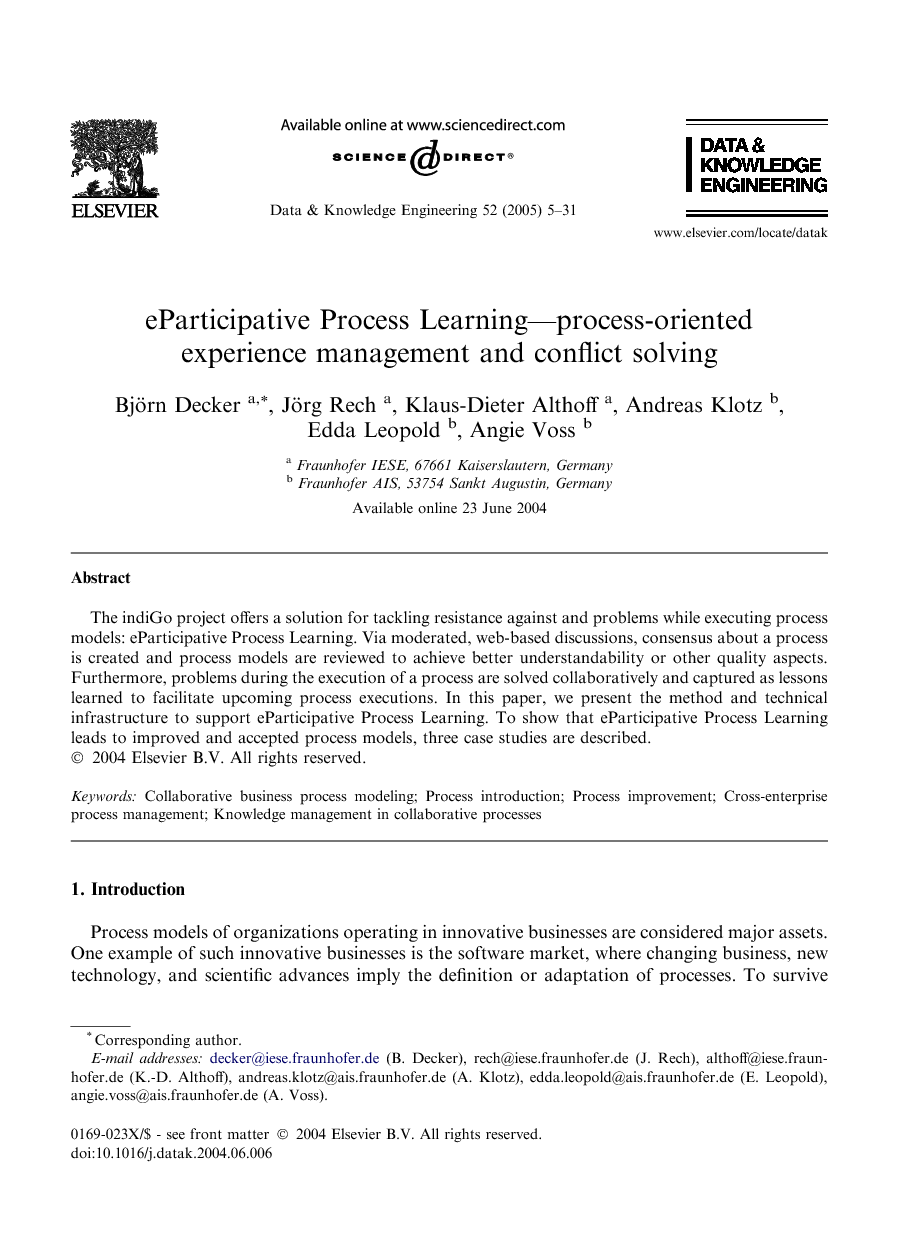ترجمه فارسی عنوان مقاله
آموزش فرایند مشارکتی الکترونیکی - مدیریت تجربه فرایند گرا و حل اختلاف
عنوان انگلیسی
eParticipative Process Learning––process-oriented experience management and conflict solving
| کد مقاله | سال انتشار | تعداد صفحات مقاله انگلیسی |
|---|---|---|
| 16853 | 2005 | 27 صفحه PDF |
منبع

Publisher : Elsevier - Science Direct (الزویر - ساینس دایرکت)
Journal : Data & Knowledge Engineering, Volume 52, Issue 1, January 2005, Pages 5–31
ترجمه کلمات کلیدی
مدل سازی فرآیند کسب و کار مشارکتی -
مقدمه فرآیند -
بهبود فرایند -
مدیریت فرایند متقابل شرکت -
مدیریت دانش در فرایندهای مشترک
کلمات کلیدی انگلیسی
Collaborative business process modeling,Process introduction,Process improvement,
Cross-enterprise process management,Knowledge management in collaborative processes

